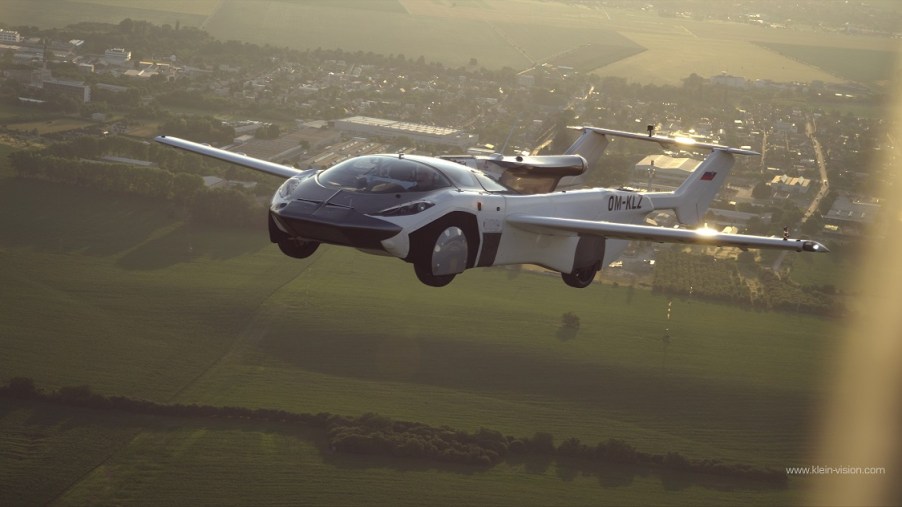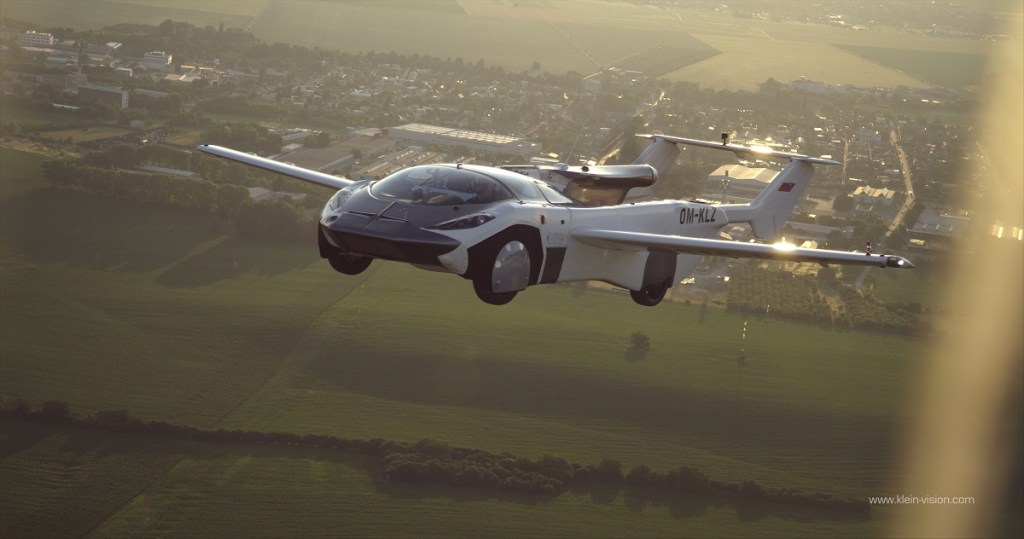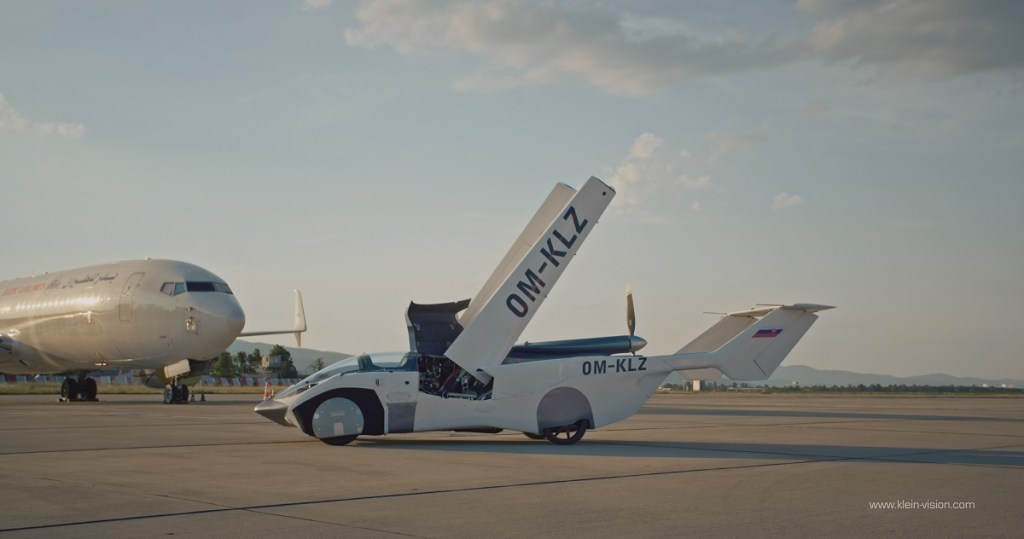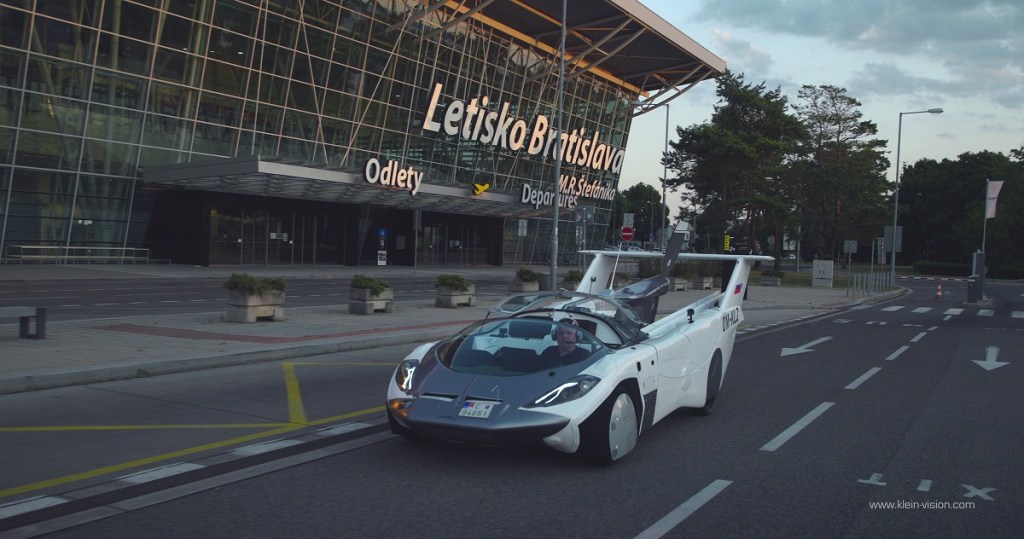
AirCar Has “Turned Science Fiction Into a Reality”
Flying cars have long been a source of science fiction inspiration. The Jetsons were perhaps the most famous TV family to commute via car-plane (plane-car?), but that doesn’t mean they were the only ones thinking about it. Cars that act like airplanes are closer than ever to becoming a reality. Multiple companies are designing them, and the AirCar just completed its 142nd test run.

Is there really a flying car?
There really is a flying car, complete with wings and wheels. (Not those teeny tiny wheels that 90,000 pound planes somehow land on, but regular car-sized wheels.) It’s called an AirCar, which is pretty self-explanatory, and also doesn’t explain anything. How does does it work?
The AirCar is made by Klein Vision. It has a BMW engine that’s capable of 160 horsepower, like a typical car. However, the engine also has a fixed propeller and a ballistic parachute, which a typical car most certainly does not come with (but should, because that’s pretty cool). It runs on regular car gas.
The AirCar goes from car to flying car with the push of a button. Once pressed, the tail of the AirCar extends, and the wings rise like a majestic eagle, then settle into their flying position. After landing, the AirCar turns back into a regular car (well, a regular car with a tail) in two minutes and fifteen seconds, which is less time than it takes me to find my keys every morning.
The AirCar just completed its 142nd test flight

The AirCar safely landed after its 35-minute flight from an airport in Nitra, Slovakia to Bratislava, Slovakia on June 28, 2021. After landing, Professor Stefan Klein drove it into town (after transforming it back into a car, of course). He said, “This flight starts a new era of dual transportation vehicles. It opens a new category of transportation and returns the freedom originally attributed to cars back to the individual.”
Altogether, the AirCar has completed 40 hours of flights at 8,200 feet, testing its ability to do things like turn and maneuver around…clouds, probably, or birds. During these tests the AirCar’s top speed was 190 km/h, or roughly 118 mph for us Americans with our backwards measuring system.
The AirCar can carry two people up to 440 pounds, but it can’t take off and land vertically like a helicopter, so you’d need to have a runway.
But that’s not all! The AirCar has a second prototype in pre-production. This has a 300 horsepower engine and should be able to cruise at 300 km/h (or about 186 mph).
Are flying cars the future?

Morgan Stanley thinks so. They believe that flying cars could be worth $1.5 trillion dollars in the next twenty years. There is also hope that it will relieve the strain on transportation.
Klein Vision says it’s taken a little over $2.3 million to develop the prototype for the AirCar. Anton Zajac, a Klein Vision investor, thinks that the company could be very successful and profitable. He said, “There are about 40,000 orders of aircraft in the United States alone,” he said.
Although people are intrigued, not everyone is ready to hop in an Aircar. Dr. Stephen Wright, a senior research fellow in avionics and aircraft at the University of the West of England, said, “I have to admit that this looks really cool – but I’ve got a hundred questions about certification…I can’t wait to see the piece of paper that says this is safe to fly and safe to sell.”
Would you get in an AirCar? People may be reluctant to hop in one now, when there are only a handful developed, and none flying around regularly yet. Maybe as time goes by, they’ll become standard transportation, and we can all live our Jetsons dreams.


